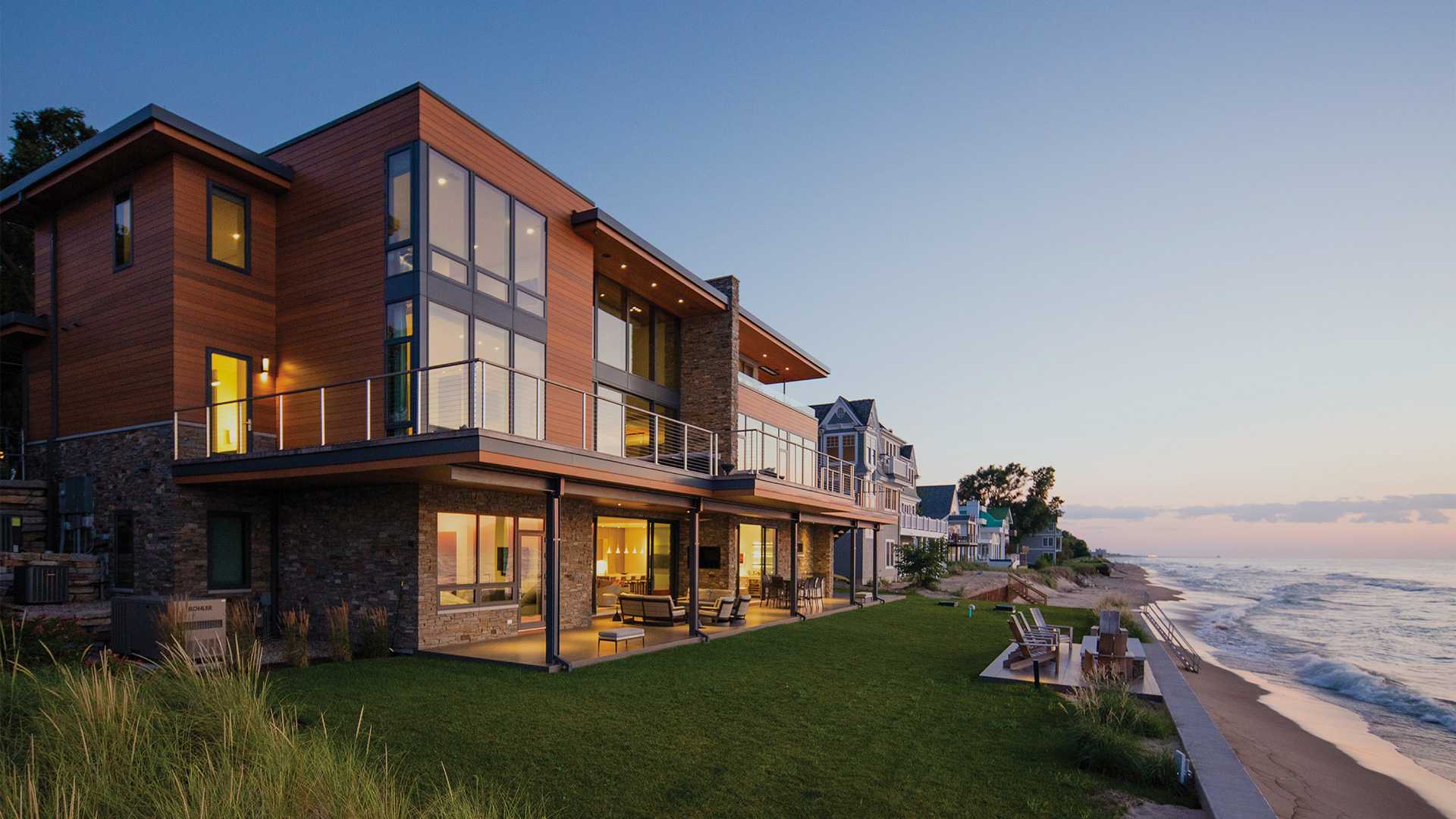Back
Back
Back
Back
Back
Back
Back
Back
Back
Back
USA & Canada
Why Love Western Red Cedar? Let Us Count the Ways

Sign up now for our DIY Project Newsletter
Wood of Quality is Beautiful, Durable, Versatile, Easy to Use & Maintain
Choosing a favorite quality of Western Red Cedar is like trying to decide a favorite flavor of ice cream. Start with the basics like vanilla and chocolate, and the choices multiply from there.
So it is with Western Red Cedar. Basically, it is beautiful, and its ability to accept stains means its beauty comes in many hues. As one of North America’s most durable woods, it lasts for decades and even centuries. Light in weight, uniformly textured, straight-grained and containing no resin, Western Red Cedar is easy to work with, with a wide variety of uses.
It is a favorite material of architects and builders, but they may not agree on why. With Western Red Cedar, it’s difficult to decide which of its many qualities is best.
Here’s why.
Western Red Cedar is beautiful, in both sight and scent
No man-made material can duplicate the depth of Western Red Cedar’s natural luster. Its subtle, natural aroma is another hallmark of its universal appeal.
It’s one of North America’s most durable woods
Natural resistance to deterioration has long made Western Red Cedar the premier choice for either interior or exterior home use. Cedar fibers contain natural compounds called thujaplicins that act as natural preservatives, making the wood extremely long-lasting. These compounds also give the wood its distinct aroma. Properly finished, Western Red Cedar will last for decades, even in harsh environments.
It lays flat and stays straight
The even grain and relatively consistent density make Western Red Cedar less likely to swell, warp, cup and twist than other soft and hard woods. As a result, it retains a distinguished appearance that lends a mark of quality to any home.
Western Red Cedar is easy to use
Low density and consistency make it an ideal wood to cut, saw, nail and glue. Even a handsaw goes through the wood easily.
In finishes, Western Red Cedar offers a rainbow of choices
Though rich in extractives that enhance durability, Western Red Cedar is free of the pitch and resin found in other softwoods. That makes it ideal for a wide range of finishes. From lightly toned clear solutions to two-coat solid colors, cedar ranks at the top in its ability to accept and maintain a finish.
It’s light in weight
Western Red Cedar’s large, open cell structure makes it less dense than most other softwoods. This quality makes it easy to move from place to place on the job.
It’s warm – or cool
Western Red Cedar’s low density increases the insulation of a home by transporting less heat through interior wall paneling or exterior wall siding than brick or stone, vinyl or gypsum drywall. Conversely, it helps keep interiors warmer in cold weather.
Western Red Cedar’s insulation blocks noise
As an interior paneling or exterior siding, the low density of Western Red Cedar makes it an acoustical barrier of much greater quality than most products marketed for those applications.
What Western Red Cedar’s Qualities Mean in the Home
Siding and paneling
Beauty, durability, choice of finish, insulation value and dimensional stability make Western Red Cedar a premier material for exterior siding and interior paneling. Its ability to accept different stains, dampen vibrations and reduce or confine noise makes it particularly effective for use as paneling. The wood is versatile enough to be used in residential, commercial or industrial structures and is widely used in saunas for its low thermal conductivity.
Decking
Pleasing to the senses, naturally durable and stable, Western Red Cedar is a very popular choice for decking material. It stays flat and stable and lasts for decades with easy maintenance. Western Red Cedar decks are firm but resilient, not hard and unyielding. While the wood is ideal for almost all types of finishes, in addition homeowners who prefer a distinctive silver gray colour may allow their decks to age naturally.
Specialty uses
Produced in a range of patterns and sizes, Western Red Cedar often appears in fencing, lattice, balustrades, gazebos, pergolas and in decorative accessories. Because it needs minimal treatment, unlike the toxic chemical preservatives used on pressure-treated woods, Western Red Cedar is ideal for use in playground equipment. Wood carvers and other artisans choose it for its beauty and workability.
Western Red Cedar – Timeless Quality
Builders and homeowners around the world continue to appreciate the natural beauty of Western Red Cedar, a wood with roots of use that date back centuries to the Native Americans who first named it the “Tree of Life.” Today, Western Red Cedar also provides unmatched durability and versatility – qualities that make it perhaps the most beloved and valued of the building woods.
© 2025 All rights reserved
Gatsby Website Development by Jambaree